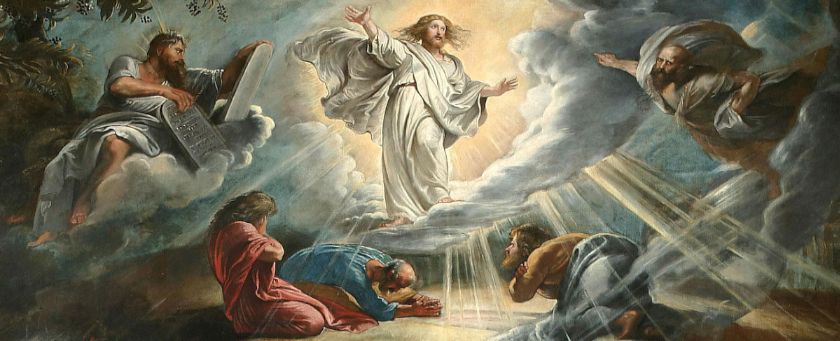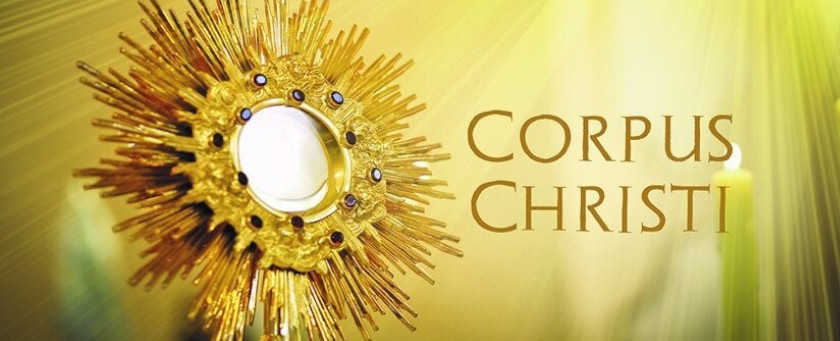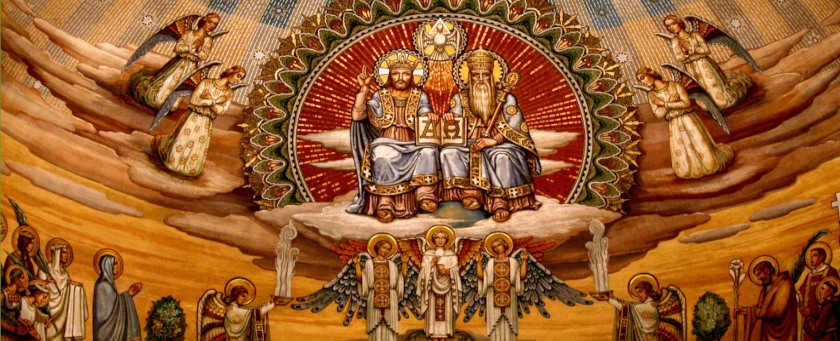The Transfiguration of Jesus Reveals His Power
Second Sunday of Lent, Year B

Readings:
Gn 22:1-2, 9a, 10-13, 15-18; Ps. 116; Rm. 8:31b-34; Mk. 9:2-10
(Audio recorded live, 28 February 2021)
Last week, we heard Mark’s account of Jesus’ testing in the desert by Satan, and how Jesus is the spirit-filled warrior empowered by God to contend with Satan and the evil kingdoms of the earth so he can usher in the kingdom of God. Mark describes these events with such intensity that its hard not to get caught up in the excitement. Jesus then begins to call his disciples, and immediately begins casting out demons and healing the sick. Jesus wastes no time in performing these miracles, but what are they meant to communicate to us, the reader?
The importance of a miracle story is really two-fold. First, and primary, is to show that Jesus is the Messiah, the anointed one, and second, to show the people’s response to Jesus’ display of power. Over and over the Gospels all show how people come to believe in Jesus as they witness his miracles and listen to his words. Chief among these believers are, of course, those who Jesus healed of their afflictions. They often go about proclaiming Jesus, spreading his name in the surrounding towns and villages, making it difficult to him to enter a town openly.
In a similar way, the miraculous transfiguration of Jesus in today’s Gospel passage accomplishes the same two points. Mark vividly describes the way in which Jesus reveals his glory on Mt. Tabor, including the manifestation of Moses and Elijah with him. Such a manifestation of power connects perfectly with the image of Jesus as spirit-filled warrior and is a clear sign of his spiritual anointing. His clothes dazzling white and his face shining bright reveal his power; and the appearance of two great prophets, Moses and Elijah, act as a bridge between the messengers of the past and the Word Incarnate. Peter’s reaction to the spectacle is appropriate given his lack of understanding. The disciples are often depicted in Mark’s gospel as slow to comprehend the great mysteries unfolding before their eyes. Mark tells us that Peter was so terrified he did not know what to say. In hindsight, I would imagine building tents seemed a bit silly, but it was the Feast of Booths, so Peter was simply following the Law. But, upon showing his attachment to the Law, the cloud overshadows them as God says, “This is my beloved Son. Listen to him.” Then, Moses and Elijah vanish leaving only Jesus alone. In other words, as in times past the people of Israel kept the Law of Moses and listened to the voices of the prophets, but now is the time of fulfillment, and they are to listen to Jesus, the only begotten Son of God, the Messiah, the true giver of the Law. And so, Peter, James, and John were given a great sign of things to come, and the command to listen to Jesus. As followers of Jesus, we too, are commanded to listen to him. So, how will we respond?
As we continue our journey through Lent, we might ask ourselves: How have I been listening to Jesus? What is he saying to me? How am I responding to him? If we haven’t yet asked these questions, perhaps we can make it our prayer after Holy Communion, that as Abraham responds to the voice of God, saying, “Here I am,” we too, may say, ‘Here I am, Lord. I come to do your will.’
Given during the COVID-19 pandemic.





Twitter
Facebook
Pinterest
Email